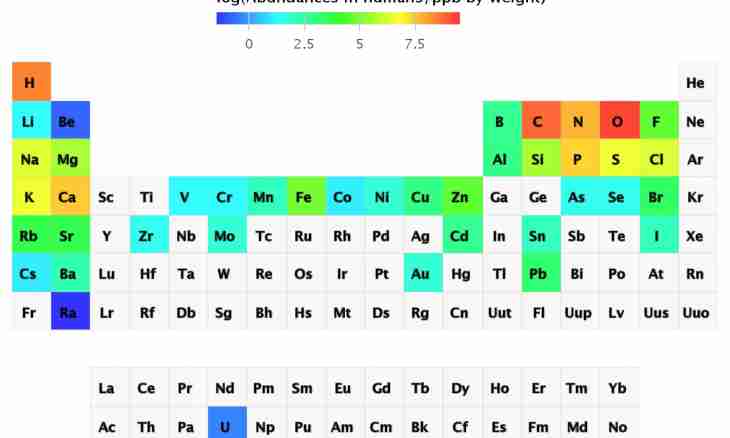The periodic law which is fundamentals of modern chemistry and explaining regularities of change of properties of chemical elements was opened by D.I. Mendeleyev in 1869. The physical meaning of this law is opened when studying complex structure of atom.
In the 19th century was considered that atomic mass is the main characteristic of an element therefore for classification of substances used it. Now atoms define and identify in size of a charge of their kernel (to number of protons and serial number in Mendeleyev's table). However, the atomic mass of elements behind some exceptions (for example, the atomic mass of potassium is less than atomic mass of argon) increases in proportion to their charge of a kernel.
At increase in atomic mass the periodic change of properties of elements and their connections is observed. It is metallicity and not metallicity of atoms, atomic radius and volume, ionization potential, affinity to an electron, electronegativity, oxidation levels, physical properties of connections (temperatures of boiling, melting, density), their basicity, amphoteric character or acidity.
How many elements in the modern table of Mendeleyev
Mendeleyev's table graphically expresses the periodic law opened for them. The modern periodic system contains 112 chemical elements (the last – Meitnerium, Darmstadtium, Roentgenium and Copernicium). According to the latest data, also the following 8 elements are open (up to 120 inclusive), but not all from them received the names, and these elements for the present a little at what printing editions are present.
Each element occupies a certain cage in a periodic system and has the serial number corresponding to a charge of a kernel of its atom.
As the periodic system is constructed
The structure of a periodic system is presented by seven periods, ten rows and eight groups. Every period begins alkaline metal and comes to an end with noble gas. Exceptions make the first period beginning hydrogen and the seventh incomplete period. The periods are divided into small and big. The small periods (first, second, third) consist of one horizontal row, big (fourth, fifth, sixth) – of two horizontal rows. The top ranks in the big periods are called even, lower – odd. In the sixth period of the table after lanthanum (serial number 57) there are 14 elements similar on properties to lanthanum, – lanthanides. They are taken out in the lower part of the table separately. The same treats also the actinoids located after actinium (with number 89) and in many respects repeating its properties.
Even ranks of the big periods (4, 6, 8, 10) are filled only with metals.
Elements in groups show identical highest valency in oxides and other connections, and this valency corresponds to number of group. The main subgroups contain in themselves elements of the small and big periods, collateral – only big. From top to down metal properties amplify, nonmetallic – weaken. All atoms of secondary subgroups are metals.

